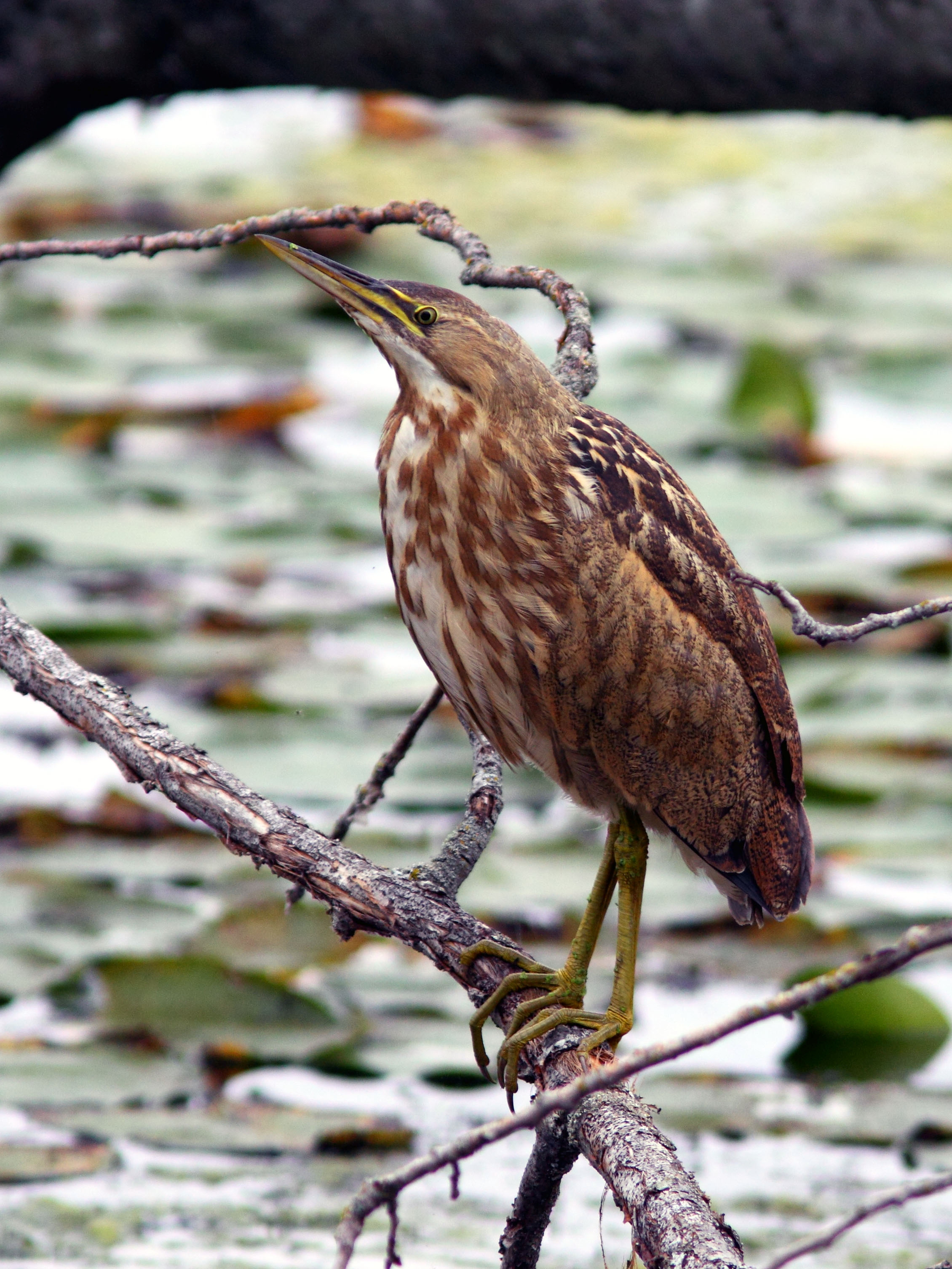Bird of the Month: American Bittern
By Hugh Jennings
PC: Mick Thompson (American Bittern)
Scientific Name: Botarus lentiginosus
Length 28 in
Wingspan 42 in
Weight 14 oz (400 g)
AOU Band code AMBI
The American Bittern (AMBI) is about 28” long with a wingspan of 42”. The genus name Botarus (boh-TAW-rus) is from the Latin botarus, a bittern, and the species name lentiginosus , freckled, referring to the speckled plumage. It is a large, chunky, brown bird with upperparts streaked with brown and buff, underparts streaked with brown and white. It has a white throat, pointed bill and yellow eyes. There is a black patch, or stripe, on each side of the neck. In flight they have a brown back with dark outer wings.
Bitterns are secretive, cryptically colored marsh birds that are unique among herons in being more easily heard than seen. They move slowly through dense marsh grass. When alarmed, a bittern will “freeze” with its neck upstretched and bill pointed skyward. Its pattern of vertical stripes provides camouflage against a background of marsh grasses.
It breeds in freshwater marshes, mainly large shallow wetlands with tall marsh vegetation, throughout most of central and northern U.S. and Canada. It winters in similar areas along both Pacific, Atlantic and Central America coastlines and also in brackish marshes. It is a solitary feeder that stands or walks very slowly, then strikes prey with a lightning stab. The diet is mostly fish, but also reptiles, amphibians, insects and small mammals. The platform nest is composed of cattails, sticks, grasses, placed in dense marsh vegetation a few inches above water.
There are 2-7 buffy olive-brown eggs. Females do most of the incubation and feeding the young. Incubation is 28-29 days then the young leave the nest in 14 days. The time of first flight is not known, possibly 7-8 weeks. Its distinctive spring song, oonk-a-lunk or pump-er-lunk, is most often heard at dusk in dense marsh reeds. The call is likened to an old-fashioned hand pump and has been referred to by many other local names, including slew pumper, thunder pumper and stake bird. The notes carry a half mile or more as the bird, after gulping air, forces it up from its distended belly.


